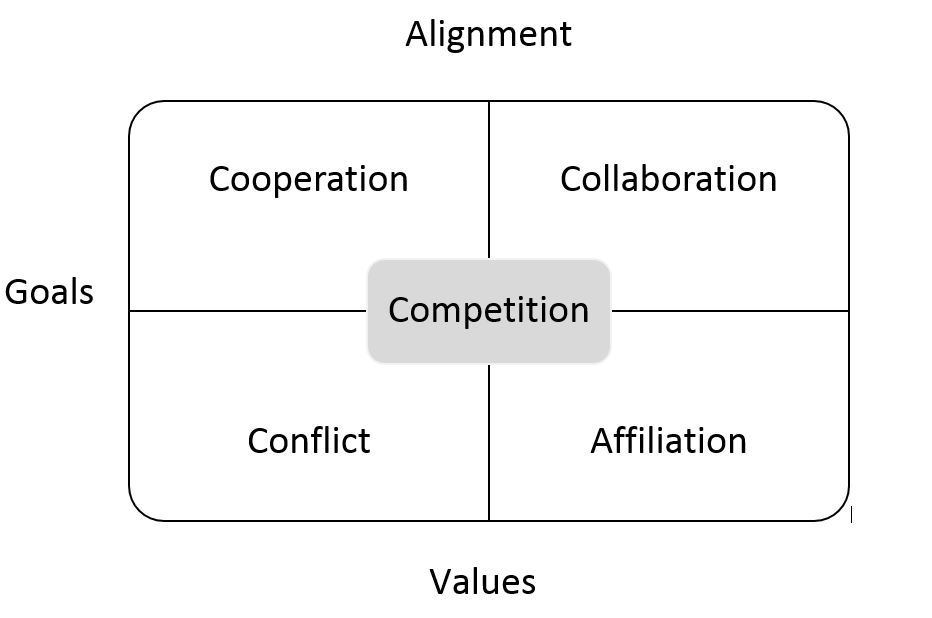We collaborate externally and internally in our organization. It is something that we do to get things done. However, in this strange world we live in we often may collaborate one day and compete the next. Internally, we may fight another department for a needed resource. If you think we don’t, just sit in at the next budget meeting and see who fights for what allocation. Externally, we may partner with a company on one occasion, and on another directly compete. When working with someone, I often use the analogy that no matter what, we usually are going to overlap somewhere even if it is just a fight for prioritization of a customer’s budget.
In reading, Building Better Teams: 70 Tools and Techniques for Strengthening Performance Within and Across Teams, I came across an interesting framework that the authors called the Goals-Value Matrix. As you might surmise, it was one of the 70 tools that they propose in the book. An outtake from the book:
Goals are simply what we are trying to achieve in this particular context. They are not yet “joint” Goals. They are the goals the parties have in hand, in this shared context, as they come to the table. With goals shared, we can move on to values. Once again, we need to simplify an often complex and emotionally charged topic. To simplify, I define a value as What I hold as important when consciously taking a decision or action. This simple definition of values is true for all conscious choices. The parties ask themselves, in this context, and related to their goals, what they hold important when taking decisions or actions. With the answers on the table, they can again look for existing alignment.
We might note that the process to this point is one of conversation and dialogue. Existing goals and values should be heard without judgment. Information is shared to help all assess current levels of alignment. Having put this information on the table and having built the groundwork for conversation and dialogue, we can now move into the shaping of joint Goals and the Values required to deliver them effectively. Only when alignment is high on both axes do we have true collaboration. In summary, the Goals-Values Matrix shows:
Cooperation Quadrant: Low alignment on Values with high alignment on Goals leads to Cooperation (we will work together to get the job done but forget about having lunch or dinner!).
Affiliation Quadrant: Low alignment on Goals with high alignment on Values leads to affiliation (we enjoy hanging out, sharing professional stories and ideas but are not looking to deliver something together).
Conflict Quadrant: Low alignment on both Goals and Values leads to conflict! (Remember we are working in the same competitive environment and context,)
Collaboration Quadrant: High alignment on both Goals and Values leads to collaboration (we become generative, creative, and capable of high performance, working in a mutual direction).
What I like about this Matrix is that the goal, sorry for the pun, is it develops a current state. To determine where we are at on a given project with an external partner. It is not a judgement but an awareness of how well we are aligned and in what area. We could choose to work in present area or we could choose to move to another. If moving we would have to evaluate the changes needed to do this.
Though values stay fairly constant they should be something that we monitor and evaluate over time. Goals however change often, especially in a competitive space. Having conversations often about the project’s goal is important. It may be a leading indicator that the situation is changing and give you an opportunity to act accordingly.
You may also want to refer: Successful Lean teams are iTeams and What is your iCustomer Level




